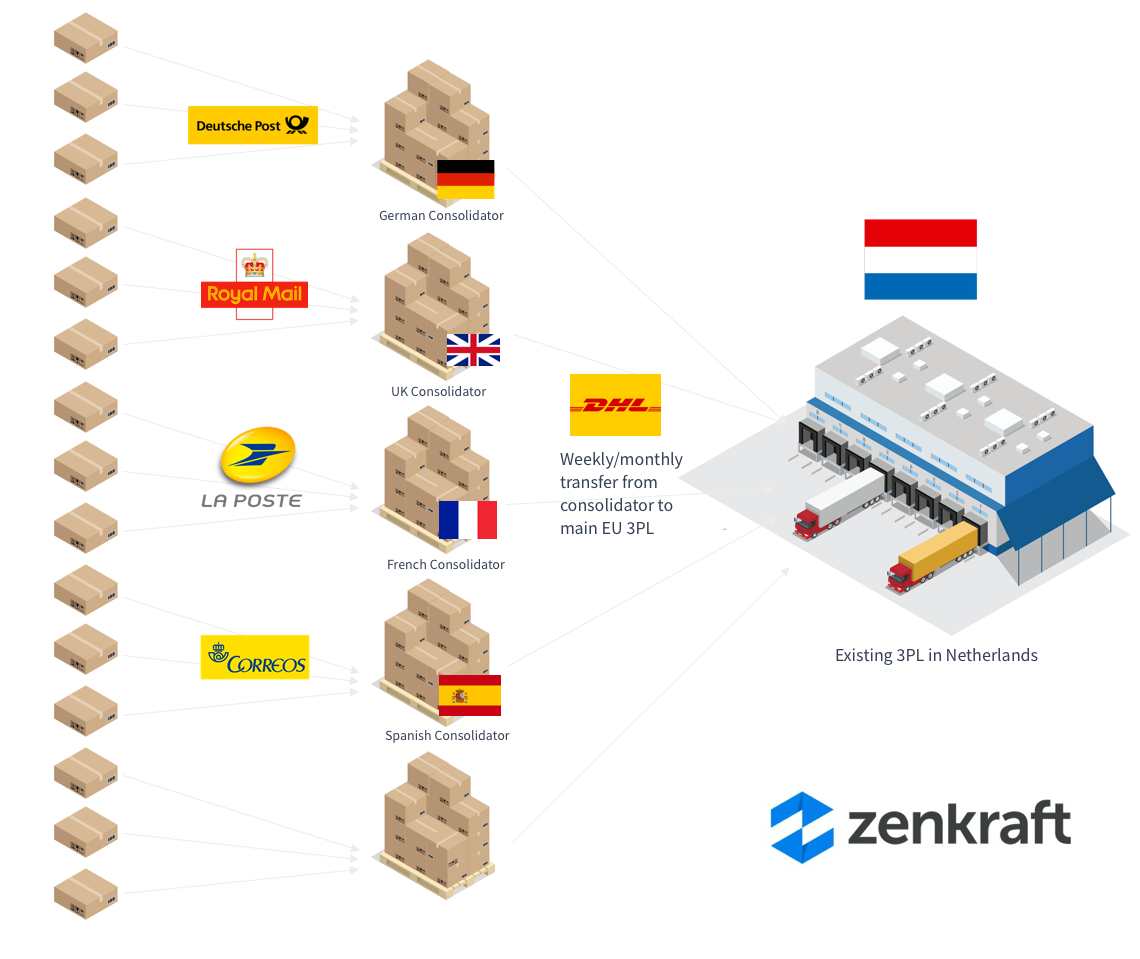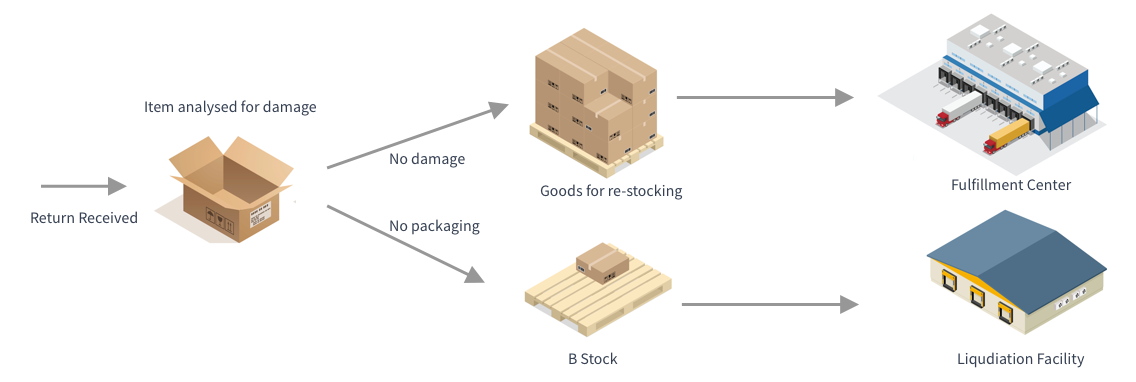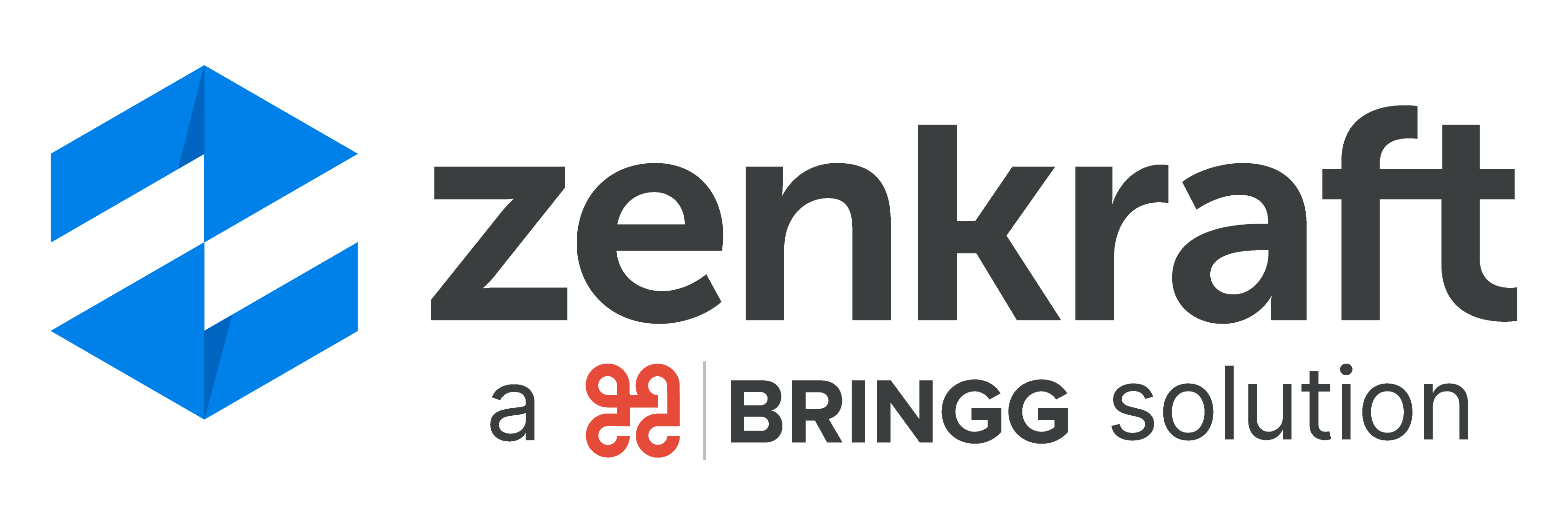US based retailers will find it challenging to establish B2C reverse logistics (RMA/Warranty/Exchanges) in the European market. Europe had 50 countries, 25 official languages and 28 different currencies. There are also many more postal providers and consolidators providing more options compared to the US.
But making returns easy, and cost-effective will have a profound impact on the success in this market.
To help retailers setup for success, we’ve outlined a 8 step process to build out the most cost-effective returns network within Europe. The model below has the following benefits:
- It’s best for the consumer as it takes advantage of many countries local postal providers.
- It’s best for the retailer since many postal providers are as low as 30% of the cost of a local vendor.
Here is an overview of the model:

It’s worth noting that this most is more suited to retailers who ship smaller packages weighing under 1 KG.
The financial model to achieve the below ended up saving the retailer $1.1m/year in logistics costs. If you'd like us to share this Excel model, please contact us.
The steps to setup a European-based network are outlined below:
1. Analyse your existing returns data
Before overhauling your returns model in Europe we’d encourage you to look at your existing returns data, if available. Which countries in Europe have the highest number of returns but also the highest return rates? It doesn’t make sense to setup a consolidator warehouse in a country with low returns volume. Also, are there areas where you can reduce the return rate ahead of this project? For consumer electronics companies a report by Accenture found that a staggering 95% of returns are unconnected to product defects! Perhaps setting up extra product documentation, better images, an omnichannel customer service experience might be the first step before embarking on the below.
2. Engage with consolidator warehouses
Initially we’d recommend just starting with 2-3 consolidator warehouses. Typically we see these being based in the UK, Germany and France or the Nordics. A problem retailers will face is that the vast majority of 3PLs won’t want to work with them. Fulfillment centers make money by taking a cut of the shipment cost and charging a picking fee. Handling inbound returns from postal vendors means that a large percentage of their profit goes away. There are companies that are prepared to help though. Once a retailer finds a vendor that is prepared to work with them - they should analyse their capabilities and costs. Some questions a retailer should ask are as follows:
- What is your inbound handling fee? Typically we see €2-3/item
- What are your IT setup costs? Typically we see €1500-3000 one-time setup
- What is the daily pallet storage rate? Typically we see €0.1-0.3/day
Consumer electronics companies may want to ask if they offer a service to analyse whether they can offer a service for No Trouble Found “NTF” shipments. The faster they identify this the faster the item can be restocked and resold. The consolidator can also sort the goods before they’re transferred to a 3PL. E.g. they could send 2 pallets per week - 1 for restocking and 1 for liquidation.
3. Decide upon your returns software platform
A retailer will need a centralized platform to handle the returns data that integrates with their e-commerce platform and helpdesk tool.
Zenkraft can handle this for the Salesforce platform but there are other platforms that handle this outside of the Salesforce ecosystem. Here is a quick checklist of capabilities to look for in a returns solution:
- Carrier integration - postal vendors are notorious for providing bad APIs, does the solution integrate with the postal services in the countries with the highest returns?
- Integration - what does integration look like with your Service tool, CRM, e-commerce platform and OMS/ERP?
- Reporting - what are the reporting capabilities? Can you schedule reports, create dashboards? Can you automatically share them across other departments e.g. “Return reasons” reports to merchandising?
4. Select returns channels
Will a retailer accept returns directly from their e-commerce store or will require their customer contact their call center first? Or both? The experience will be slightly different for each company:
On a retailers e-commerce store
A retailer should include workflow that asks product-specific questions about why something is being returned. This should then potentially generate a label with an RMA number embedded. This will help the 3PL scan the shipment for identification which can update your system notifying the consumer that the package has been received. Once a return label has been generated the retailer should show DOPU “Drop Off Pick Up” locations nearest to their customers address for the convenience. DOPU data accessibility varies by country. Some carriers have a really nice API such as PostNord in Sweden: https://developer.postnord.com/api/docs/location
In your Service Center
Service agents should be able to email a shipping label to the retailer's customer. They may also want to include a dynamic script to for their call center agents to ask questions about why the item was returned. The email with the label attached should be branded and show the customer the nearest 3-5 locations for dropping the parcel off.
5. Collect data about why returns are happening
How can you improve if you don’t know is going wrong? We worked with an apparel retailer that used Zenkraft reporting to highlight a single garment had a return rate of 60% and 75% of the returns were due to the item being too small. This data was passed back to the merchandising team who subsequently suggested to the manufacturer that the garments size should be increased.

6. Have your consolidator send a single pallet back to a single facility each week
Depending on your volume and restocking requirements, retailers may want to send the pallet back to your centralized 3PL weekly. They could even ask the consolidator to send 1 pallet back to the 3PL for restocking and the other to a liquidator for disposal as below:

7. Provide Real-time visibility to your customer
Retailers should provide tracking notifications and status on their website to show the status of the return. Often consumers are left in the dark about the status of their return and have to check their credit card bill daily to see when and if the refund occurs. Providing real-time status updates along with email notifications provides transparency to customers:

8. Provide real-time reports and dashboards
Once the system is up and running retailers should monitor its performance. Zenkraft’s customers are using Salesforce’s built-in reports and dashboards to create Control tower-like visibility of their operations. This enables them to identify problems and respond quickly.



